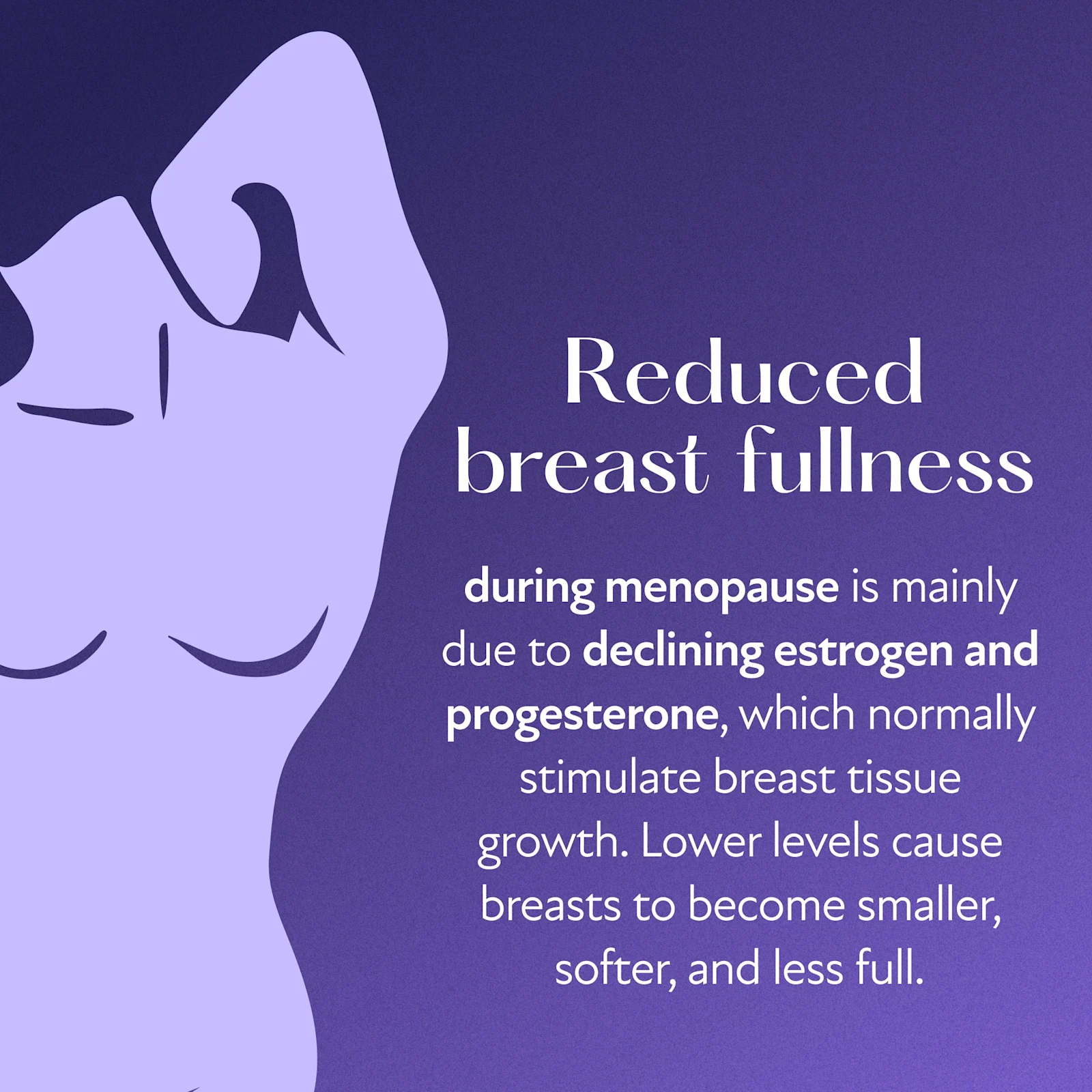Menopause can cause some changes in women’s bodies that may leave them feeling like they are losing a part of their femininity. One such change is the loss of breast fullness.
As hormone levels drop during menopause, the breast tissue can become less dense, which causes a noticeable decrease in breast fullness. Age-related factors can also contribute to this loss in breast density, leading to a natural shift in firmness and shape over time.(1)
While these breast changes are natural, they may have an emotional impact. For some women, these changes make them feel self-conscious or affect their self-image. Knowing that various treatment approaches are available to manage breast changes during menopause can help women transition through this phase with greater confidence and ease.
Why does loss of breast fullness happen during menopause?
Breast tissue is made up of fat, milk glands and ducts, and connective tissue. The female hormones estrogen and progesterone support the growth and development of these tissues, keeping the breasts firm, elastic, and dense.
When hormone levels drop, the milk glands and ducts may shrink, causing the breasts to lose their firmness. The connective tissues may also lose their elasticity, potentially leading to sagging.(1)
Age-related reduction in tissue elasticity may hasten these breast changes in some women. Studies show that women lose about 1% of their connective tissue every year starting in their mid-20s, with menopause often speeding up this process.(2)
However, not everyone going through menopause experiences loss in breast fullness. Some women may notice an increase in breast density, and others might go through menopause without any noticeable breast changes.

Symptoms of Loss of Breast Fullness During Menopause
Some signs that can indicate a loss in breast fullness include the following:
Smaller or less firm breasts
A noticeable change in breast shape
Looser or sagging breasts
Is HRT a viable treatment option for loss of breast fullness during menopause?
It’s important to know that it might not be possible to revert some menopause or age-related breast changes. However, individuals can take precautions to delay or prevent these changes to some extent, including the use of hormone replacement therapy.
HRT supplies female hormones externally to help maintain hormonal balance. A 2012 study suggests that women who take HRT during menopause tend to have better breast density or fullness as compared to those who don’t.(3)
Women who take HRT may also see improvements in breast shape, size, and firmness. However, it’s important to note that if there was sagging prior to menopause, HRT may not fully restore breast fullness.
When to See a Doctor About Loss of Breast Fullness During Menopause
Loss of breast fullness is a common symptom during menopause. However, the following changes may indicate unusual breast conditions that require medical attention:(4)
Nipple discharge
Unexplained changes in breast shape or size
A lump in the breast or underarm
Sunken or inverted nipples
Dimpling or puckering of the breast skin
Experiencing loss of breast fullness in menopause? Discover if HRT is right for you.
If you’ve entered the menopause transition and are struggling with loss of breast fullness, take our brief menopause quiz to see if you’re an eligible candidate for HRT. Get started with Winona to take the first step toward feeling better.
